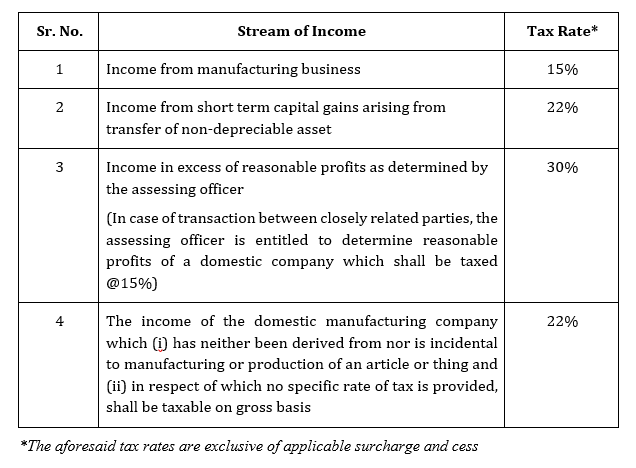Registrar of Companies cannot strike off the name of a company when there is litigation or insolvency proceedings pending by or against it – NCLT Ahmedabad
The National Company Law Tribunal, Ahmedabad (“NCLT Ahmedabad”) has by an order dated November 6, 2019 (“NCLT Order”), held that the Registrar of Companies cannot, during the pendency of Corporate Insolvency Resolution Process (“CIRP”), strike off the name of a company involved in pending litigation.
FACTS
M/s. J. R. Diamonds Private Limited (“Company”) was incorporated in 1977 as a private limited company under the Companies Act, 1956. An Insolvency and Bankruptcy Petition filed under Section 9 of the Insolvency and Bankruptcy Code, 2016 (“IBC”) was admitted against the Company by the NCLT pursuant to an order dated February 13, 2018, under which one Mr. Vinod Tarachand Agrawal (“Appellant”) was appointed as the resolution professional. The Appellant was subsequently appointed as the liquidator of the Company by NCLT Ahmedabad by its order dated October 1, 2018. Following this, by a letter dated December 20, 2018, the Appellant informed the Registrar of Companies, Gujarat (“Respondent”) of the order passed by the NCLT Ahmedabad for liquidation of the Company, to which no response was received from the Respondent. While the status of the Company at the time of initiation of CIRP was shown as being ‘Active’, the Appellant subsequently discovered from the web portal of the Ministry of Corporate Affairs that the name of the Company had been struck off from the register of companies maintained by the Respondent during the pendency of the liquidation process pursuant to an order dated August 6, 2018 passed by the Respondent. The present appeal was filed by the Appellant towards seeking restoration of the name of the Company in the register of companies maintained by the Respondent.
ARGUMENTS
The Appellant, inter alia, contended that at the time of Company’s name being struck off by the Respondent, the Company had assets valuing INR 81,26,35,384, which included an investment of INR 4,50,00,000 in the preference shares of M/s. Peacock Jewellery Limited (“PJL”). The Appellant further contended that the said preference shares had matured and the payment recovery was due from PJL, for which the Appellant, being the liquidator, had filed a petition with the National Company Law Tribunal, Bengaluru. The Appellant informed NCLT Ahmedabad that the said petition was pending as on the date of filing of the present appeal and hence the name of the Company ought to have not been struck off. The Appellant also contended that the Respondent had struck off the name of the Company from the register maintained by the Respondent primarily because the Company had failed to file its financial statements and statutory annual returns from the financial year 2013-14 onwards. It was further contended by the Appellant that the Respondent had not followed the correct procedure under Section 248(1) of the Companies Act, 2013 as it had proceeded to publish the notification for striking off the name of the Company in the official gazette without sending a notice to the Appellant seeking his representation in relation to the proposed strike-off, as is statutorily required.
The Respondent, on the other hand, argued that the present appeal was not maintainable because the Company had failed to file its statutory returns for a continuous period of more than two years which mandated the Respondent to strike-off the name of the Company from the register of companies maintained by it as prescribed under Section 248(1) of the Companies Act, 2013. Notwithstanding the above, the Respondent submitted that NCLT Ahmedabad may pass appropriate orders for restoration of the name of the Company subject to fulfilment of the following conditions: (i) the Company filing all its financial statements and annual returns for the years on which the same were not filed, as well as all other event based filings, as prescribed under the Companies Act, 2013, (ii) publication of notices in two leading newspapers circulating in the district and the official gazette of the Government of India with regard to restoration of the name of the Company, at the cost of the Appellant, (iii) assurance that the Appellant will ensure that the Company will not make any default in filing statutory returns in the future, and (iv) payment of such costs by the Appellant as may be deemed fit by the Respondent for restoring the name of the Company in the register of companies maintained by it.
OBSERVATIONS OF NCLT AHMEDABAD
NCLT Ahmedabad noted that the Appellant, being the liquidator of the deregistered Company, is competent to file the present appeal to seek restoration of the Company’s name in the register of companies maintained by the Respondent. NCLT Ahmedabad also observed that when the name of the Company was struck off by the impugned order dated August 6, 2018, the Insolvency and Bankruptcy Petition had already been admitted and the CIRP had commenced with effect from February 13, 2018. Further, moratorium was declared in relation to the Company under Section 14 of the IBC, and accordingly no proceeding against it could have been legally initiated nor the provisions of Section 248 of the Companies Act, 2013 could have been invoked during such moratorium period.
NCLT Ahmedabad also took cognisance of Circular No. 16 dated December 26, 2016, issued by the Ministry of Corporate Affairs, that sets out that the provisions of Section 248 of the Companies Act, 2013 would not be applicable in respect of companies against which any prosecution for any offence, an application for compounding of offence, or any litigation is pending, pursuant to the order of a competent court.
In arriving at its decision, NCLT Ahmedabad relied on the decision of the Delhi High Court in M.A. Panjwani v. Registrar of Companies and Another [(2015) 192 Comp. Case 380 Dec.], where it was held that when there is litigation pending by or against a company before any competent court of law, striking off the name of such company by the Registrar of Companies was not justified.
NCLT Ahmedabad also relied on the decision of the Honourable High Court of Andhra Pradesh and Telangana (“AP HC”) in Velamati Chandrasekhara Janardan Rao v. M/s. Sree Raja Rajeswari Paper Mills Limited and Another [(2016) 198 Comp. Case 335 (AP)], where it was held that under Section 560(6) of the Companies Act 1956, the company court has the power to order restoration of a company’s name to the register of companies either on an application made by such company or its members or creditors or when it appears to the company court that it is ‘otherwise just’ that the name of such company be restored in the register. In this matter, the AP HC observed that the company court has the discretion to order restoration, even if the company was not carrying on any business or was not in operation at the time of striking off, if it appears to the court to be ‘otherwise just’. In arriving at its decision, the AP HC had relied on the judgement of the Madhya Pradesh High Court in Bhogilal Chimanlal v. Registrar of Joint Stock Companies [(1954) 24 Comp. Case 279 (MB)], where it held that the effect of the order of the Registrar of Companies striking off the name of a company from the register of companies would be that the company will be deemed to be dissolved and it may be difficult for the petitioner to obtain any relief in a suit pending before the trial court.
In addition to the above, NCLT Ahmedabad noted that the impugned action by the Respondent was inoperative and void in law due of the provisions of Section 238 of IBC, which has an overriding effect over other legislations.
DECISION OF THE NCLT AHMEDABAD
Considering the above, NCLT Ahmedabad conditionally allowed the present appeal and directed the Respondent to restore the name of the Company in the register of companies maintained by it, subject to compliance of the following conditions by the Appellant on behalf of the Company: (a) the Appellant would file all overdue statutory returns on behalf of the Company with fees and imposed penalties, if any, within ninety days from the receipt of the NCLT Order, (ii) the Appellant would publish a notice in leading newspapers circulating in the district as well as in the official gazette of the Government of India with regard to the restoration of the name of the Company in the register of companies, and (iii) before compliance of the statutory requirements of the Respondent, the Appellant would verify and settle the statutory requirements of the IBC.
Vaish Associates Advocates View
The ratio decidendi adopted by NCLT Ahmedabad in this case, that courts can order restoration of the name of a deregistered company that appears to be ‘otherwise just’ gives definitive discretionary powers to courts/tribunals to settle such matters. In effect, the decision passed by NCLT Ahmedabad invalidates any action not in conformity with the provisions of the IBC during the pendency of CIRP, and reaffirms the overriding effect of the IBC.This is in consonance with the intent of the said legislation requiring that the moratorium period provided thereunder should act as a bar against any additional statutory process being undertaken against a company, which would otherwise frustrate the very purpose of the CIRP.
For more information please write to Mr. Bomi Daruwala at [email protected]






